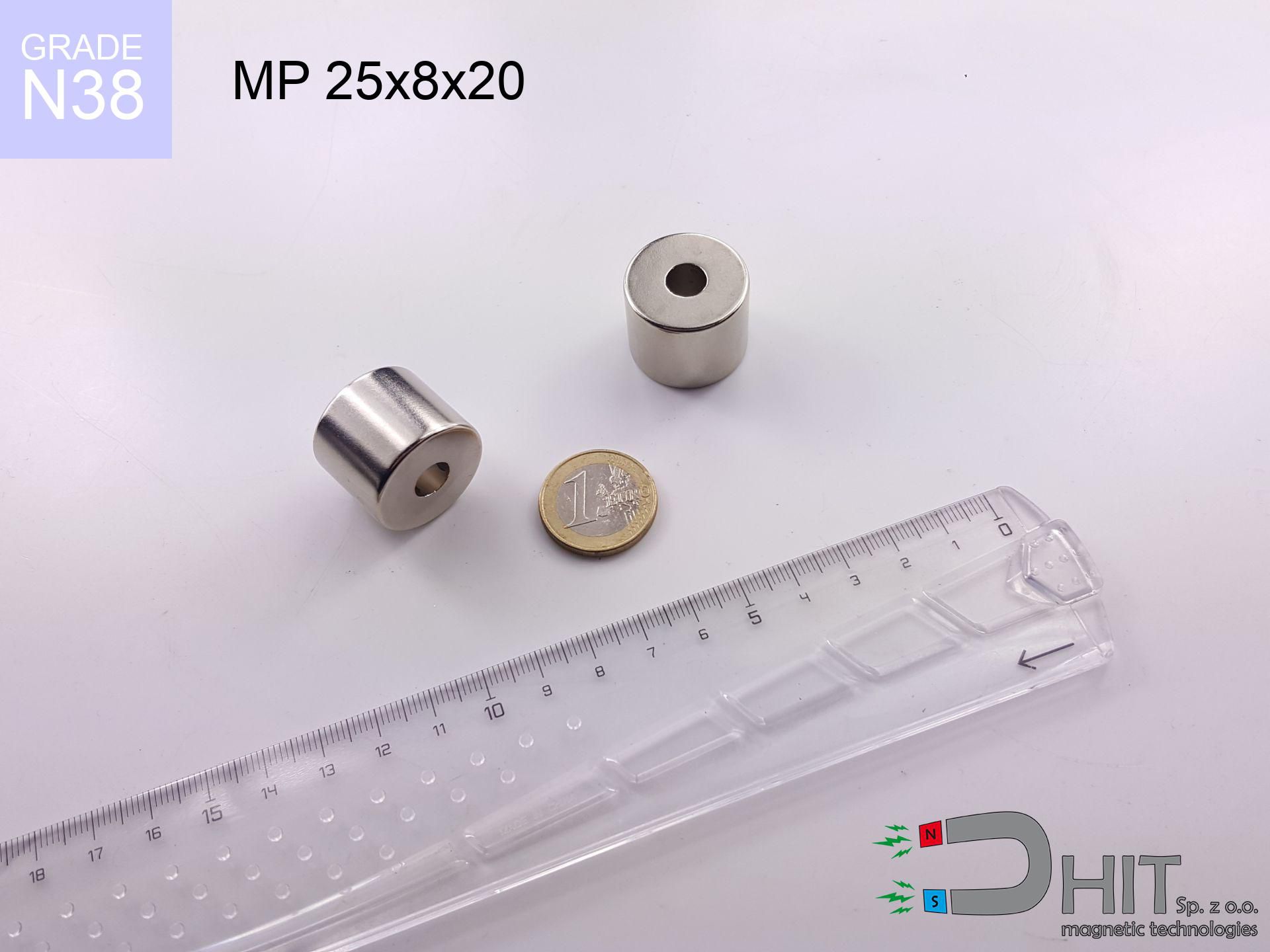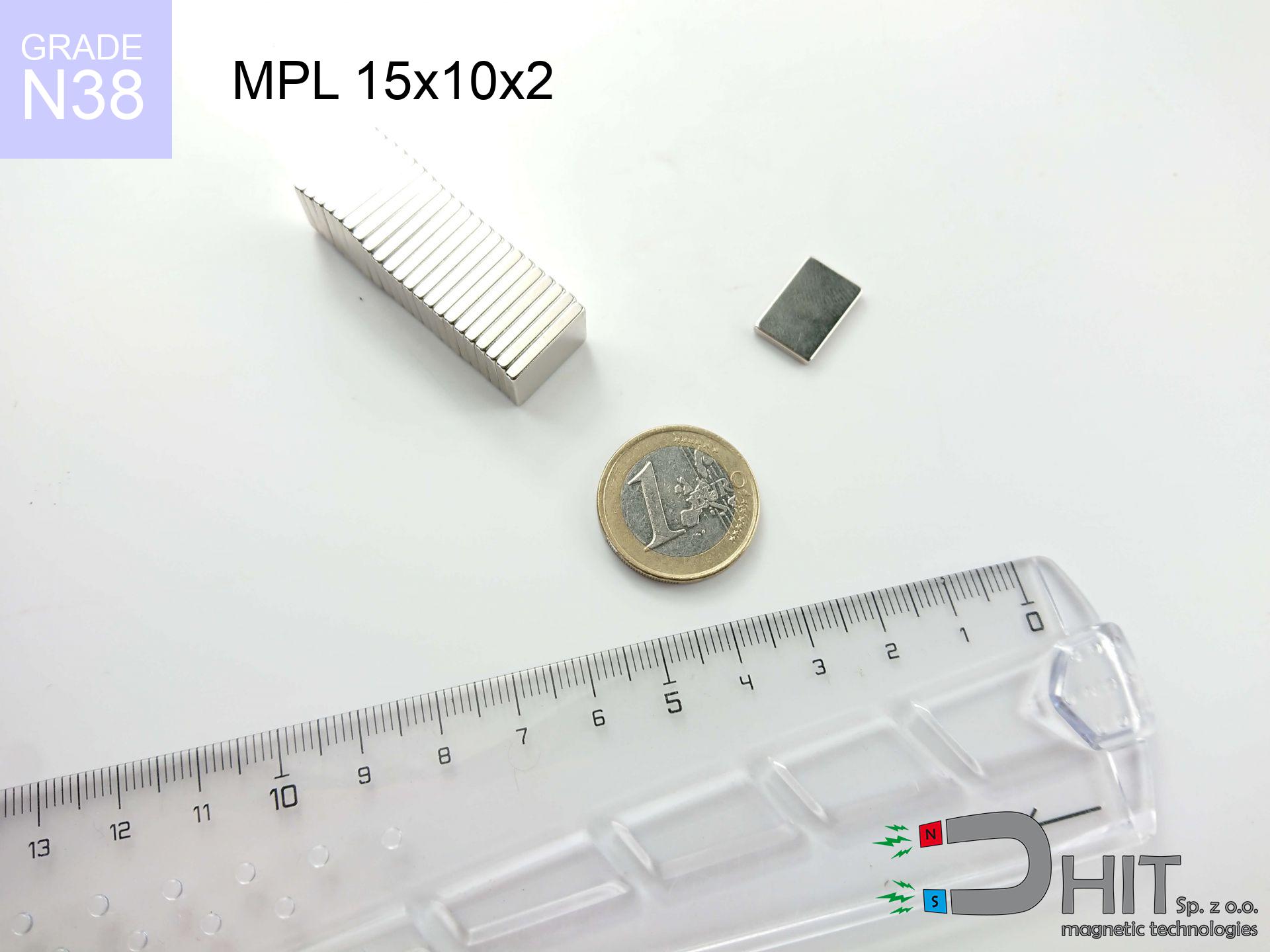MP 25x8x20 / N38 - neodymium magnet
ring magnet
catalog number 030450
GTIN: 5906301812340
external diameter Ø
25
mm [±0,1 mm]
internal diameter Ø
8
mm [±0,1 mm]
height
20
mm [±0,1 mm]
magnetizing direction
↑ axial
capacity ~
8.55 kg / 83.85 N
magnetic induction ~
81.51 mT / 815 Gs
max. temperature
≤ 80
°C
catalog number 030450
GTIN: 5906301812340
external diameter Ø
25 mm [±0,1 mm]
internal diameter Ø
8 mm [±0,1 mm]
height
20 mm [±0,1 mm]
magnetizing direction
↑ axial
capacity ~
8.55 kg / 83.85 N
magnetic induction ~
81.51 mT / 815 Gs
max. temperature
≤ 80 °C
41.71 ZŁ gross price (including VAT) / pcs +
33.91 ZŁ net price + 23% VAT / pcs
bulk discounts:
need more quantity?Want a better price?
Call us tel: +48 22 499 98 98 or contact us via form on our website. You can check the lifting capacity as well as the appearance of neodymium magnet in our magnetic calculator magnetic calculator
Orders placed by 2:00 PM will be shipped on the same business day.
Specification: ring magnet 25x8x20 / N38 ↑ axial
Magnetic properties of the material N38
Physical properties of sintered neodymium magnets Nd2Fe14B
Compilation of suggested goods
Advantages as well as disadvantages of neodymium magnets NdFeB.
Apart from immense power, neodymium magnets have the following advantages:
- They do not lose their power (of the magnet). After approximately 10 years, their power decreases by only ~1% (theoretically),
- They are exceptionally resistant to demagnetization caused by an external magnetic field,
- In other words, thanks to the shiny nickel, gold, or silver finish, the element gains an aesthetic appearance,
- They have exceptionally high magnetic induction on the surface of the magnet,
- Thanks to their high temperature resistance, they can operate (depending on the shape) even at temperatures up to 230°C and above...
- The ability for precise shaping or customization to specific needs – neodymium magnets can be produced in various forms and dimensions, which amplifies their universality in usage.
- Wide application in the industry of new technologies – find application in HDD drives, electric motors, medical equipment and very advanced devices.
Disadvantages of neodymium magnets:
- They are fragile when subjected to a strong impact. If the magnets are exposed to impacts, we recommend using magnets in a metal holder. The steel housing in the form of a holder protects the magnet from impacts and at the same time increases its overall strength,
- High temperatures can reduce the power of neodymium magnets. Typically, after heating above 80°C, most of them experience a permanent loss in strength (although it is dependent on the shape and size). To prevent this, we offer special magnets marked with the symbol [AH], which are highly resistant to high temperatures. They can operate even at temperatures up to 230°C, making them an ideal solution for applications requiring high-temperature operation,
- Due to their susceptibility to corrosion in a humid environment, we recommend using waterproof magnets made of rubber, plastic, or other moisture-resistant materials when using them outdoors,
- Limited ability to create threads or complex shapes in the magnet - the use of a housing is recommended - magnetic holder
- Health risk associated with microscopic parts of magnets pose a threat, if swallowed, which becomes significant in the context of child safety. It's also worth noting that miniscule components of these magnets can be problematic in medical diagnosis when they are in the body.
Exercise Caution with Neodymium Magnets
Neodymium magnets are extremely delicate, they easily crack and can crumble.
Neodymium magnets are fragile and will break if allowed to collide with each other, even from a distance of a few centimeters. They are coated with a shiny nickel plating similar to steel, but they are not as hard. At the moment of collision between the magnets, small sharp metal pieces can be propelled in various directions at high speed. Eye protection is recommended.
Keep neodymium magnets away from GPS and smartphones.
Neodymium magnets are a source of intense magnetic fields that cause interference with magnetometers and compasses used in navigation, as well as internal compasses of smartphones and GPS devices.
Neodymium magnets can become demagnetized at high temperatures.
Although magnets have shown to retain their effectiveness up to 80°C or 175°F, this temperature may vary depending on the type of material, shape, and intended use of the magnet.
Do not place neodymium magnets near a computer HDD, TV, and wallet.
The strong magnetic field generated by neodymium magnets can destroy magnetic media such as floppy disks, video tapes, HDDs, credit cards, magnetic ID cards, cassette tapes, etc. devices. They can also destroy videos, televisions, CRT computer monitors. Remember not to place neodymium magnets close to these electronic devices.
Avoid contact with neodymium magnets if you have a nickel allergy.
Studies clearly indicate a small percentage of people who suffer from metal allergies such as nickel. An allergic reaction often manifests as skin redness and rash. If you have a nickel allergy, you can try wearing gloves or simply avoid direct contact with nickel-plated neodymium magnets.
Neodymium magnets should not be in the vicinity children.
Neodymium magnets are not toys. Be cautious and make sure no child plays with them. In the case of swallowing multiple magnets simultaneously, they can attract to each other through the intestinal walls. In the worst case scenario, this can lead to death.
Neodymium magnets are among the strongest magnets on Earth. The astonishing force they generate between each other can surprise you.
Make sure to review all the information we have provided. This will help you avoid harm to your body and damage to the magnets.
People with pacemakers are advised to avoid neodymium magnets.
Neodymium magnets generate very strong magnetic fields that can interfere with the operation of a pacemaker. This is because many of these devices are equipped with a function that deactivates the device in a magnetic field.
Dust and powder from neodymium magnets are flammable.
Do not attempt to drill into neodymium magnets. Mechanical processing is also not recommended. Once crushed into fine powder or dust, this material becomes highly flammable.
Neodymium Magnets can attract to each other, pinch the skin, and cause significant injuries.
If the joining of neodymium magnets is not controlled, then they may crumble and crack. You can't move them to each other. At a distance less than 10 cm you should have them very firmly.
To raise awareness of why neodymium magnets are so dangerous, read the article titled How dangerous are strong neodymium magnets?.


![magnetic separator 32x275 [2xM8] / N52 magnetic separator 32x275 [2xM8] / N52](https://cdn3.dhit.pl/graphics/products/sm-32x275-2xm8-get.jpg)




